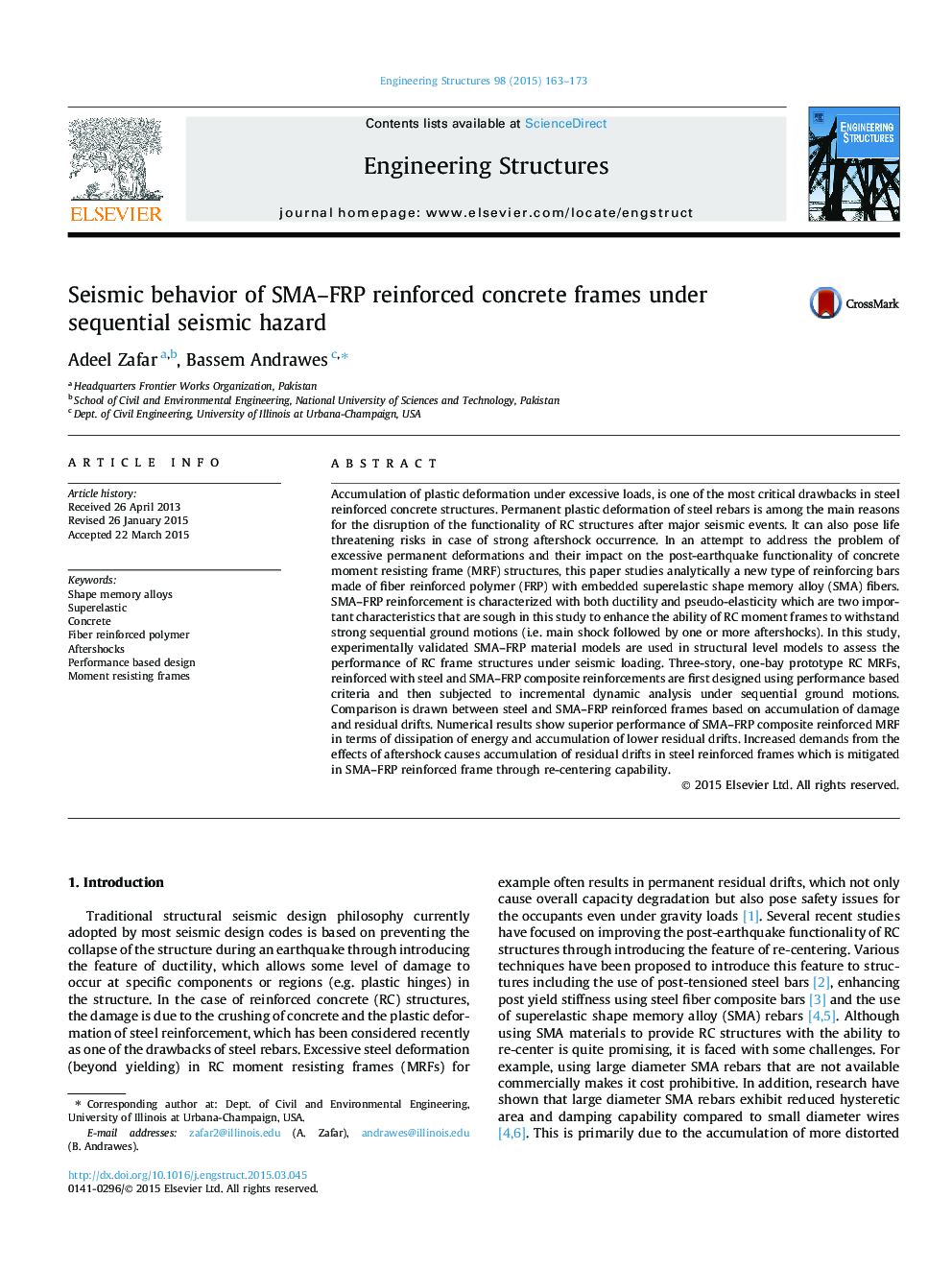| Article ID | Journal | Published Year | Pages | File Type |
|---|---|---|---|---|
| 266232 | Engineering Structures | 2015 | 11 Pages |
•Research studied use of SMA–FRP rebars as seismic reinforcement under main shock–aftershock sequences.•Seismic sequences leads to increased residual inter-story drift ratios in steel reinforced frames.•Under aftershocks, steel RC frames required less PGA to reach target drift compared to frame reinforced with SMA–FRP.•As main shock to aftershock duration ratio increases, reduction in (PGA)Steel/(PGA)SMA-FRP(PGA)Steel/(PGA)SMA-FRP ratio decreases.•Use of SMA–FRP rebars reduces significantly the accumulation of permanent damage and residual drifts of MRFs.
Accumulation of plastic deformation under excessive loads, is one of the most critical drawbacks in steel reinforced concrete structures. Permanent plastic deformation of steel rebars is among the main reasons for the disruption of the functionality of RC structures after major seismic events. It can also pose life threatening risks in case of strong aftershock occurrence. In an attempt to address the problem of excessive permanent deformations and their impact on the post-earthquake functionality of concrete moment resisting frame (MRF) structures, this paper studies analytically a new type of reinforcing bars made of fiber reinforced polymer (FRP) with embedded superelastic shape memory alloy (SMA) fibers. SMA–FRP reinforcement is characterized with both ductility and pseudo-elasticity which are two important characteristics that are sough in this study to enhance the ability of RC moment frames to withstand strong sequential ground motions (i.e. main shock followed by one or more aftershocks). In this study, experimentally validated SMA–FRP material models are used in structural level models to assess the performance of RC frame structures under seismic loading. Three-story, one-bay prototype RC MRFs, reinforced with steel and SMA–FRP composite reinforcements are first designed using performance based criteria and then subjected to incremental dynamic analysis under sequential ground motions. Comparison is drawn between steel and SMA–FRP reinforced frames based on accumulation of damage and residual drifts. Numerical results show superior performance of SMA–FRP composite reinforced MRF in terms of dissipation of energy and accumulation of lower residual drifts. Increased demands from the effects of aftershock causes accumulation of residual drifts in steel reinforced frames which is mitigated in SMA–FRP reinforced frame through re-centering capability.
